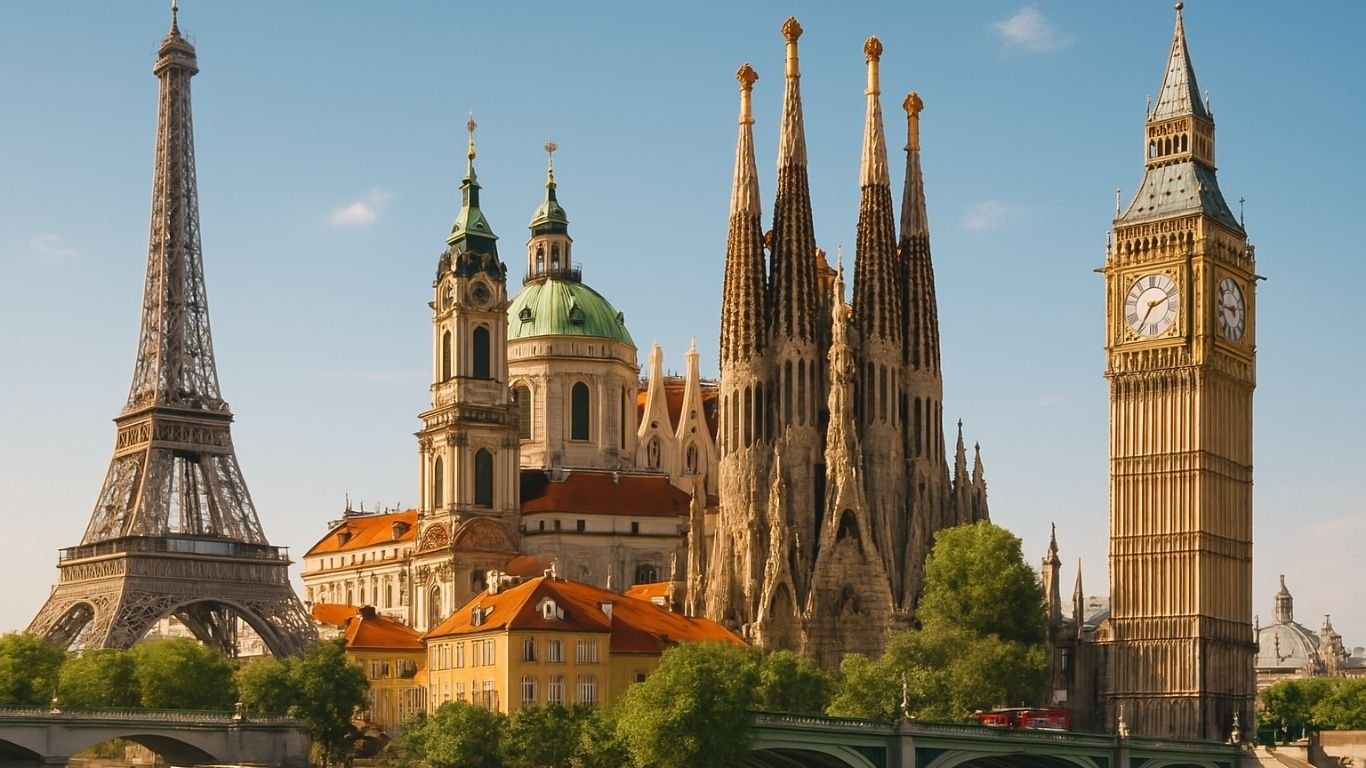Europe is a continent that enchants with its diversity—a compact yet incredibly rich blend of cultures, languages, and landscapes that can feel overwhelming for first-time travelers. From the sunlit plazas of Southern Europe to the regal capitals of the north, each city offers something distinct, making the task of choosing where to begin both exciting and daunting.
That’s where thoughtful guidance becomes essential.
This article presents a curated list of the best cities in Europe for first-time travelers—destinations that offer the perfect mix of accessibility, cultural depth, and iconic appeal. Whether you’re drawn to centuries-old landmarks, vibrant street life, or serene riverside strolls, these cities provide the ideal entry point into the European experience.
Carefully selected for their charm, navigability, and welcoming atmosphere, these locations represent more than popular tourist stops—they are immersive starting points for unforgettable journeys. If you’re planning your first European adventure, discovering the best cities in Europe for first-time travelers will help you begin that journey with confidence and clarity.
Table of Contents
1. Paris, France: The City of Lights
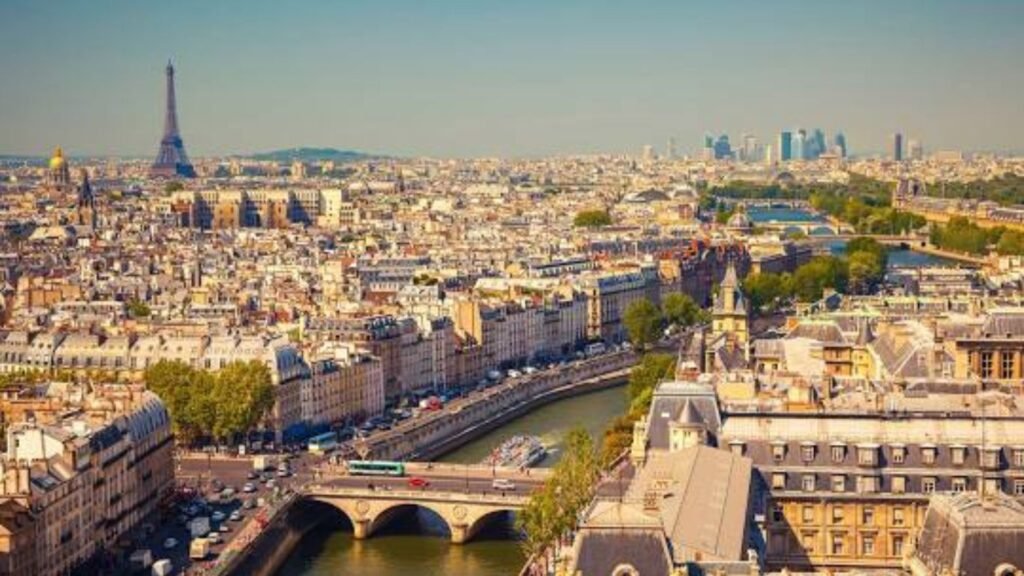
Iconic Landmarks
Few cities in the world evoke as much romanticism and admiration as Paris. For first-time visitors, it’s the quintessential European experience: the Eiffel Tower’s silhouette against a rosy twilight, the grandeur of the Arc de Triomphe, and the artistic treasures tucked inside the Louvre. Walking along the Seine, you’ll pass street vendors, historic bridges, and the gothic marvel of Notre-Dame—each corner steeped in beauty and narrative.
Paris is not just a city you visit; it’s one you absorb slowly, café by café, museum by museum. These landmarks aren’t merely tourist stops—they’re portals to the past, carefully preserved to share France’s story with newcomers.
Cultural Immersion
One of the reasons Paris ranks among the best cities in Europe for first-time travelers is its effortless ability to blend the past and present. Spend your morning admiring Monet’s lilies at the Musée de l’Orangerie, your afternoon strolling through Montmartre’s bohemian alleyways, and your evening tasting wine and cheese in a candlelit bistro.
Even the simple act of ordering a croissant at a neighborhood bakery becomes part of the Parisian experience. The city encourages you to slow down, notice details, and engage with its rhythm—a cultural immersion unlike any other.
Ease of Navigation
Paris is also highly navigable, thanks to its intuitive metro system, extensive walkability, and clear signage. First-time travelers often find comfort in the structure and accessibility the city provides. Whether you’re hopping on a train to Versailles or simply wandering the Marais district, Paris offers a balance of elegance and ease that makes travel rewarding rather than intimidating.
Language barriers exist, but many Parisians speak basic English, especially in the hospitality sector. With a bit of effort and politeness, navigating Paris becomes not only manageable but enjoyable.
2. London, England: History and Modernity
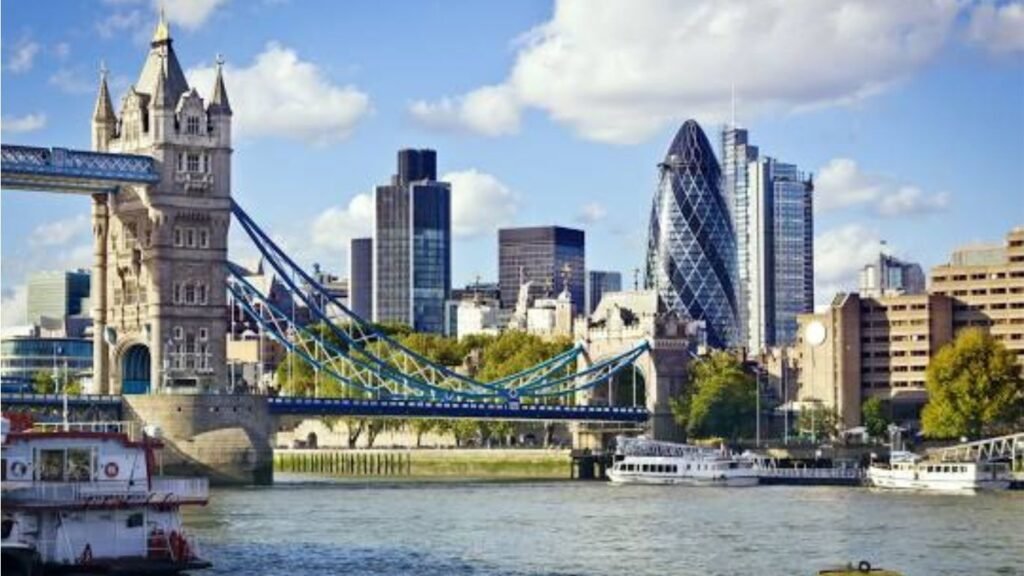
Historical Sites
London is where centuries of British history unfold against a vibrant, modern backdrop. From the Tower of London’s medieval fortifications to Westminster Abbey’s Gothic grandeur, every street whispers tales of royalty, revolution, and resilience. First-time travelers can walk the same halls as kings and queens, view the Crown Jewels, and watch the Changing of the Guard at Buckingham Palace—rituals that bring British history vividly to life.
And yet, just a few steps away, you’ll find cutting-edge architecture like The Shard or immersive exhibits at the British Museum. It’s this dynamic contrast that positions London among the best cities in Europe for first-time travelers—where historical insight meets contemporary energy.
Vibrant City Life
London pulses with life. Covent Garden buzzes with street performers and artisan shops. Camden Market overflows with eclectic finds and global street food. The West End dazzles with world-class theatre productions, while Shoreditch brims with street art and indie cafés. No matter your interest—fashion, music, literature, or sport—London offers an introduction to European diversity through a British lens.
Public spaces, like Hyde Park and the South Bank, give travelers room to breathe and explore without pressure. And thanks to its multicultural population, visitors will find an incredible variety of global cuisines and communities that add depth to their experience.
English-Speaking Advantage
One of London’s key advantages for first-time European travelers is the language. There’s no need to decode menus or fumble with translation apps. That alone removes a layer of stress many new travelers face, allowing you to focus on discovery rather than logistics.
Coupled with one of the most efficient public transportation systems in Europe—especially the iconic Underground—London becomes a natural starting point for those easing into international travel.
3. Rome, Italy: Ancient Wonders
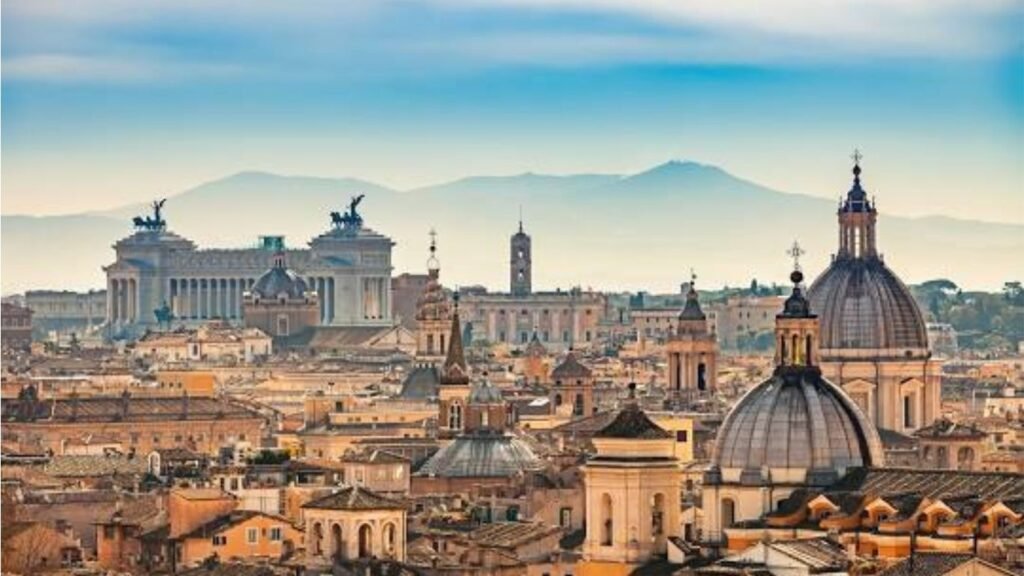
Historical Significance
Rome is an open-air museum, where 2,000 years of history rise from cobblestones and sunbaked ruins. As the former heart of the Roman Empire, it’s home to some of the most iconic ancient landmarks on Earth: the Colosseum, the Roman Forum, and the Pantheon. Walking through these remnants isn’t just sightseeing—it’s stepping into the blueprint of Western civilization.
First-time visitors often find Rome a stunning introduction to Europe’s depth of history. Even casual strolls reveal archaeological marvels at every turn. And with Vatican City nestled within its borders, you can also visit St. Peter’s Basilica and the Sistine Chapel—all in one city.
Culinary Delights
Rome isn’t just a historical gem—it’s also a culinary pilgrimage. Here, pizza is thin and crispy, pasta is handmade, and gelato is an art form. Dining is not rushed; it’s a ritual. Long lunches in trattorias and lively evenings in piazzas let you experience the Italian way of life firsthand.
The variety of traditional Roman dishes, like carbonara, cacio e pepe, and supplì, allows first-time travelers to explore Italian cuisine beyond the basics. Food tours and cooking classes offer immersive experiences that connect you more deeply with local culture.
Walkable City Center
Despite its size, Rome’s historical core is remarkably compact. Most major attractions are within walking distance of each other, making it one of the best cities in Europe for first-time travelers who prefer to explore on foot. From the Spanish Steps to Piazza Navona, you can craft your own cinematic journey through winding alleys and baroque fountains.
The city can feel chaotic at times, but its energy is contagious. With some basic Italian phrases and a willingness to wander, you’ll quickly find Rome rewarding and unforgettable.
4. Amsterdam, Netherlands: Canals and Culture

Unique Atmosphere
Amsterdam feels like a storybook brought to life. With its maze of canals, arched bridges, and gabled townhouses, the Dutch capital exudes charm and character. First-time travelers are often captivated by the balance of old-world elegance and progressive spirit. Whether you’re cruising through the canals at sunset or exploring hidden courtyards in the Jordaan district, Amsterdam offers a memorable introduction to Europe’s unique blend of beauty and innovation.
As one of the best cities in Europe for first-time travelers, Amsterdam delivers an environment that’s easy to enjoy and hard to forget. The city’s relaxed pace and open-mindedness make it especially welcoming to newcomers navigating European travel for the first time.
Bike-Friendly City
Amsterdam is arguably the most bike-friendly city in the world. Its flat terrain and dedicated bike lanes make cycling not only the most efficient way to get around but also the most enjoyable. Even if you’ve never biked in a major city before, rental shops offer beginner-friendly options and guided bike tours that reveal the city’s highlights with ease.
For first-time visitors, this accessibility enhances the sense of independence. You’re not confined to metro lines or bus stops—you’re free to glide through parks, pass canal houses, and discover cafés at your own pace.
Open-Minded Culture
Amsterdam’s inclusive spirit is deeply ingrained in its culture. The city is known for its tolerance, diversity, and liberal policies. From world-class museums like the Rijksmuseum and Van Gogh Museum to poignant historical sites like the Anne Frank House, Amsterdam doesn’t shy away from presenting history and art in honest, thoughtful ways.
Locals are fluent in English and generally warm toward visitors, making interactions smooth and welcoming. For travelers seeking both comfort and cultural depth, Amsterdam stands out as one of the most approachable cities in Europe.
5. Barcelona, Spain: Art and Architecture

Gaudí’s Masterpieces
Barcelona doesn’t just showcase architecture—it celebrates it. At the heart of the city’s visual identity is Antoni Gaudí, whose surreal and organic designs define the skyline. The Sagrada Família, an unfinished basilica of dizzying spires and intricate facades, is unlike any church in the world. Nearby, Park Güell enchants visitors with colorful mosaics, whimsical curves, and panoramic views of the city.
For first-time travelers, these sites provide an unforgettable artistic encounter. They reveal not just Barcelona’s devotion to beauty but its daring spirit—a boldness that makes the city stand apart among the best cities in Europe for first-time travelers.
Beach and City Blend
Barcelona offers something few major European cities can: an urban beach. After a morning of museum visits or Gothic Quarter explorations, you can unwind by the Mediterranean, savor tapas with sea views, or walk barefoot along the Barceloneta boardwalk.
This seamless blend of city energy and coastal calm gives Barcelona a uniquely versatile atmosphere. It’s a place where culture and relaxation co-exist—a major advantage for newcomers who want to balance adventure with downtime.
Lively Atmosphere
The Catalan capital is alive with energy. Street performers bring music and dance to the bustling La Rambla. Markets like La Boqueria overflow with vibrant produce and local delicacies. At night, the city transforms into a hub of tapas bars, flamenco shows, and spontaneous celebrations.
Locals are passionate, expressive, and proud of their identity, which adds another layer of richness to the travel experience. While Spanish is widely spoken, many people understand English, especially in hospitality, making Barcelona approachable without losing its authenticity.
6. Berlin, Germany: History and Innovation

Historical Landmarks
Berlin wears its history on its sleeve. As a city shaped by war, division, and reunification, it offers a profound encounter with Europe’s 20th-century past. For first-time travelers, visiting the Berlin Wall Memorial, Checkpoint Charlie, and the Brandenburg Gate provides crucial context to understand modern Europe. The Holocaust Memorial, stark and sobering, stands as a poignant tribute to remembrance and resilience.
Yet Berlin isn’t stuck in history. Its ability to acknowledge the past while forging a forward-thinking identity makes it one of the best cities in Europe for first-time travelers—especially for those drawn to stories of transformation.
Contemporary Culture
Berlin’s contemporary culture is bold, experimental, and unapologetically original. From avant-garde art galleries to underground clubs, it’s a place that thrives on expression. The city has become a magnet for creatives, tech entrepreneurs, and alternative thinkers, resulting in a scene that constantly reinvents itself.
First-time visitors can explore the East Side Gallery—an open-air stretch of the Berlin Wall covered in street art—or spend an afternoon in the sprawling Tempelhofer Feld, a former airport turned public park. Berlin doesn’t just offer culture; it invites you to participate in it.
Efficient Public Transport
Berlin’s transit system is among the best in Europe. Its U-Bahn and S-Bahn trains run frequently and punctually, covering every corner of the city. For new travelers unfamiliar with European infrastructure, this efficiency is a game-changer. Clear signage, affordable multi-day passes, and mobile apps simplify navigation, allowing visitors to focus more on discovery and less on logistics.
With its layered history, creative freedom, and ease of movement, Berlin offers an unfiltered view of a modern, evolving Europe—making it a standout destination for any first-time itinerary.
7. Dublin, Ireland: Friendly and Festive
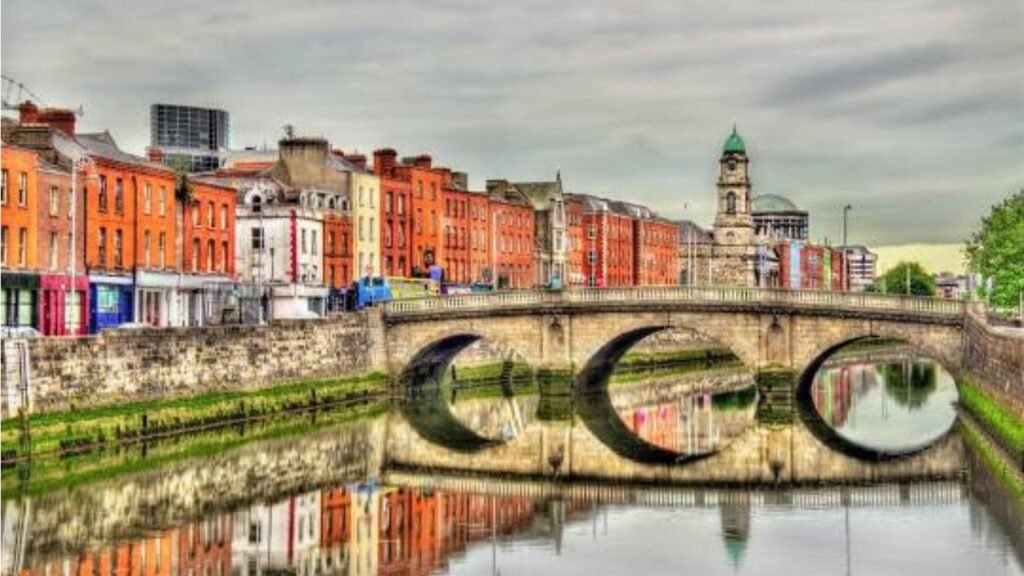
Welcoming Locals
For many first-time travelers, what defines a city isn’t just its architecture or museums—it’s the warmth of its people. Dublin excels in this regard. The Irish capital is famously friendly, and visitors are often struck by the ease with which conversations flow in pubs, cafés, or even while waiting at a crosswalk. The genuine hospitality and sense of humor here immediately put newcomers at ease.
This friendliness is one of the key reasons Dublin is considered among the best cities in Europe for first-time travelers. It’s a city where you don’t just sightsee—you connect.
Rich Literary History
Dublin is a UNESCO City of Literature and a dream destination for book lovers. As the birthplace of James Joyce, Oscar Wilde, and Samuel Beckett, the city breathes literary greatness. Trinity College’s Long Room is a must-see, with its towering bookshelves and the treasured Book of Kells on display.
First-timers can dive deeper into Dublin’s literary soul by joining walking tours or visiting the Dublin Writers Museum. Whether you’re a casual reader or an avid bibliophile, the city’s literary roots give it a distinct cultural identity.
Lively Pub Culture
Few European cities balance tradition and revelry like Dublin. The pub scene is at the heart of local life, where live music, laughter, and storytelling come together. While the Temple Bar area is famous, locals recommend venturing into neighborhood pubs for a more authentic experience.
Even if you’re not a drinker, Dublin’s pub culture is about atmosphere and camaraderie. It’s where solo travelers become part of the crowd, where folk songs invite singalongs, and where evenings turn into cherished memories.
With English as the primary language, a manageable city layout, and a warm, festive spirit, Dublin is one of the most welcoming European destinations for first-time visitors.
8. Prague, Czech Republic: Fairytale Charm
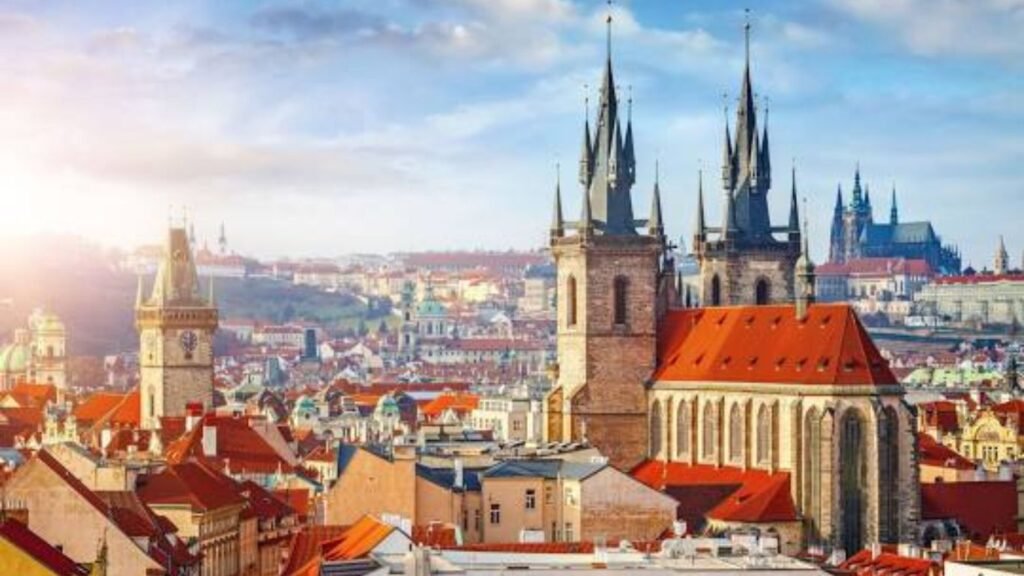
Stunning Architecture
Prague feels like stepping into a storybook. With its red-tiled roofs, Gothic spires, and Baroque facades, the city is visually enchanting. The Old Town Square, lined with pastel-colored buildings and anchored by the Astronomical Clock, is one of Europe’s most photogenic plazas. Cross the iconic Charles Bridge at dawn, and you’ll understand why Prague has earned a reputation for timeless beauty.
First-time travelers are often drawn to Prague’s architectural harmony, where centuries coexist without clashing. The compact city center allows you to take in a wealth of historic structures without needing extensive transport—making it one of the best cities in Europe for first-time travelers who crave culture on foot.
Affordable Prices
Compared to Western European capitals, Prague is remarkably budget-friendly. Accommodations, meals, and attractions are all reasonably priced, making it an ideal destination for travelers who want a rich experience without overspending. A hearty Czech meal in a traditional tavern won’t break the bank, and tickets to castles or museums are often just a few euros.
This affordability allows first-time visitors to indulge a bit more—whether it’s booking a guided tour, extending their stay, or simply enjoying a few extra slices of trdelník (a sweet pastry) along the riverbank.
Romantic Atmosphere
There’s a quiet, romantic energy to Prague that invites you to slow down. Whether you’re strolling through the castle complex, watching swans glide across the Vltava, or listening to classical music echo in centuries-old halls, the city offers moments of wonder and serenity.
For couples, solo travelers, or friends exploring together, Prague’s charm is easy to fall in love with. English is widely spoken in tourist areas, and the local hospitality industry is well-versed in helping newcomers feel at home—solidifying Prague’s status as a standout for first-time European adventurers.
9. Lisbon, Portugal: Coastal Beauty
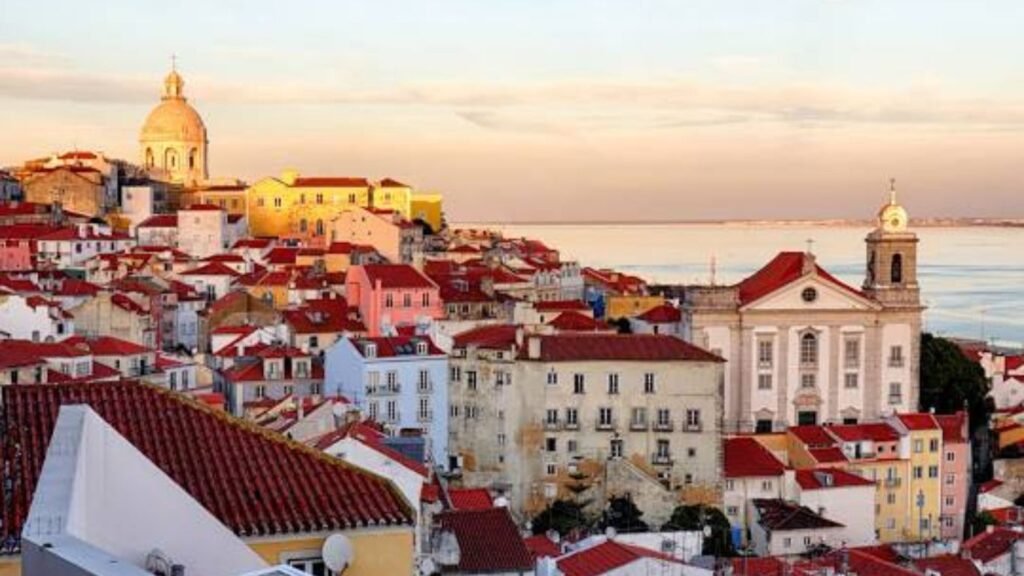
Historic Neighborhoods
Lisbon is a city built on hills, where every ascent rewards you with sweeping views of terracotta rooftops and the shimmering Tagus River. For first-time travelers, wandering through its historic neighborhoods is a delight. Alfama, with its labyrinthine alleys and soulful Fado music echoing from tiled houses, offers a raw, authentic taste of old Lisbon. Meanwhile, Bairro Alto and Chiado pulse with creative energy and stylish boutiques.
The mix of Moorish, Gothic, and Manueline architecture gives Lisbon a distinct identity—an elegant blend of cultures that’s easy to explore on foot or by hopping onto the iconic yellow tram 28.
Delicious Cuisine
Portuguese cuisine is as heartfelt as it is flavorful. From custard tarts (pastéis de nata) to grilled sardines and hearty bacalhau (salt cod) dishes, Lisbon’s food scene reflects its maritime heritage and love for simplicity done right. First-time visitors can enjoy vibrant food markets like Time Out Market, or duck into family-run tascas for affordable, authentic meals.
Dining in Lisbon is both a culinary and cultural experience. It invites you to slow down, savor, and connect with the rhythms of daily life—making the city a rewarding destination among the best cities in Europe for first-time travelers who crave flavor as much as discovery.
Relaxed Vibe
Compared to other capitals, Lisbon feels unhurried and grounded. The pace of life is mellow, and its people are approachable and genuinely warm. English is widely understood in tourist areas, but locals appreciate a friendly “obrigado” (thank you). Combined with year-round sunshine and coastal breezes, the city is an ideal introduction to Southern Europe.
Whether you’re sipping espresso in a tiled plaza or watching the sunset from Miradouro da Senhora do Monte, Lisbon feels like a soft landing into European travel—scenic, soulful, and deeply satisfying.
Tips for First-Time European Travelers
Planning and Booking
One of the most important steps before visiting the best cities in Europe for first-time travelers is proper planning. Europe’s diverse destinations require a thoughtful approach—especially when it comes to logistics. Book flights early for the best fares, and always check visa requirements based on your nationality. Websites like Schengen Visa Info provide up-to-date entry rules.
Use tools like Google Flights or Skyscanner to compare airfare, and consider multi-city itineraries if you’re visiting more than one destination. For accommodations, platforms such as Booking.com and Airbnb offer flexible options suited to different budgets.
Always carry a copy of key documents, and make digital backups. This includes your passport, travel insurance, and booking confirmations.
Transportation Advice
Europe’s transport network is among the best in the world. High-speed trains, budget airlines, and efficient metro systems make it easy to navigate between and within cities. For intercity travel, consider a Eurail Pass if you’re visiting multiple countries. Intra-city transport is usually reliable—metro cards, like Paris’s Navigo or Berlin’s BVG, save time and money.
Download apps like Citymapper or Moovit to simplify routes and avoid tourist confusion. Walking remains one of the best ways to explore old towns and historic districts, especially in compact cities like Prague or Rome.
Cultural Considerations
Cultural norms vary, but respect and politeness go a long way across Europe. Greet shopkeepers, say “please” and “thank you” in the local language, and be mindful of dress codes in religious sites.
Tipping customs differ—generally less than in the U.S.—so look up local expectations. Also, dining in many European cities is a leisurely affair, not rushed. Embrace it. Meals are social, often slow-paced, and meant to be savored.
Finally, be prepared for different service styles. In some places, waiters won’t bring the bill unless asked, and shops might close for extended lunch breaks or on Sundays.
Staying Safe
Europe is generally safe, but like anywhere, it’s important to stay alert. Pickpocketing is common in tourist-heavy areas, so keep valuables secure and avoid displaying expensive items. Use cross-body bags with zippers, and be especially cautious on public transport and near landmarks.
Emergency services are accessible via 112 across the EU. Travel insurance is a smart investment, covering everything from medical issues to lost luggage.
Stay connected with offline maps, know your embassy’s contact info, and register your travel plans if your home country offers such a service. Simple precautions can ensure that your first European experience is memorable for all the right reasons.
Schengen Area – WikipediaConclusion
Europe offers more than just iconic sights and postcard views—it offers perspective. For those venturing out for the first time, choosing the right entry point is essential to shaping a meaningful and manageable experience. The best cities in Europe for first-time travelers are not just beautiful—they’re welcoming, navigable, and culturally rich in ways that resonate long after you’ve returned home.
Paris invites you to fall in love with art and ambiance. London wraps you in layers of history and global culture. Rome walks you through the remnants of an empire, while Amsterdam draws you into its canals and open-minded charm. From Barcelona’s bold creativity to Berlin’s raw innovation, each city tells its own compelling story.
Dublin greets you with warmth, Prague enchants with fairytale streets, and Lisbon balances coastal calm with old-world depth. These cities aren’t just destinations—they’re curated gateways into the heart of Europe.
So whether you’re sipping espresso beneath Roman ruins, biking alongside Dutch canals, or watching the sunset from a Lisbon miradouro, know that your first European journey is just the beginning. These experiences will shape your understanding of the continent, inspire future travels, and leave you with memories that linger long after your suitcase is unpacked.
FAQ
What is the best city to start with for a first-time trip to Europe?
London is often considered one of the best starting points for first-time travelers due to the lack of a language barrier, excellent public transport, and wide variety of attractions. It also connects easily to other European capitals via train or short flights.
How many cities should I visit on my first trip to Europe?
For a first trip, 2 to 4 cities over 10 to 14 days is ideal. This allows enough time in each place to explore without feeling rushed. Prioritize quality of experience over quantity of stops.
Is it easy to travel between cities in Europe?
Yes. Europe has a highly developed and efficient transportation network. High-speed trains connect major cities, and budget airlines offer affordable regional flights. Local public transport is also reliable and easy to use.
Do I need a visa to visit multiple cities in Europe?
If you’re from a visa-exempt country like the U.S., Canada, Australia, or Japan, you can visit most European countries within the Schengen Area for up to 90 days without a visa. Always check individual country requirements before traveling.
What is the best time of year for first-time travelers to visit Europe?
Late spring (May–June) and early autumn (September–October) offer ideal conditions—fewer crowds, pleasant weather, and lower prices than peak summer. These seasons also bring cultural events and a more relaxed travel pace.
Is Europe safe for solo travelers?
Yes, Europe is generally very safe for solo travel, especially in the cities mentioned in this guide. Common sense precautions—like watching your belongings and staying aware of your surroundings—go a long way.
What should I budget for my first trip to Europe?
Budgets vary by region, but a mid-range traveler might spend €100–€150 per day including accommodation, food, transport, and activities. Eastern and Southern Europe tend to be more budget-friendly than Western capitals.
Are language barriers a problem for first-time visitors?
In most major cities, especially those listed as the best cities in Europe for first-time travelers, English is widely spoken in hotels, restaurants, and tourist areas. Learning a few basic phrases in the local language is appreciated and enhances your experience.
